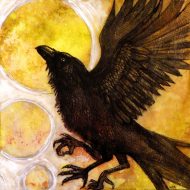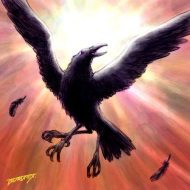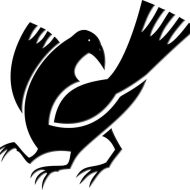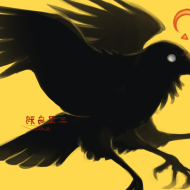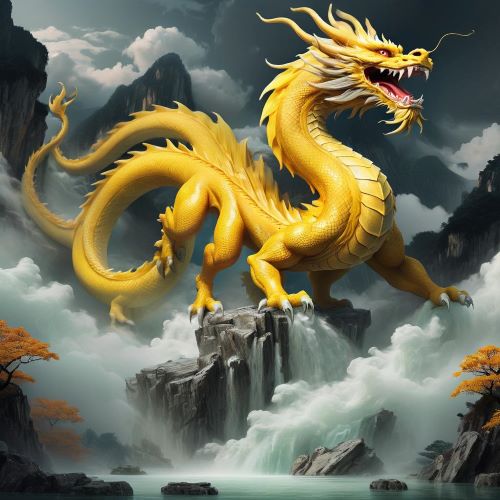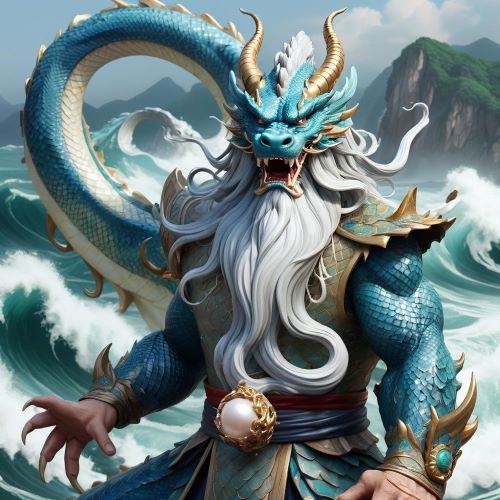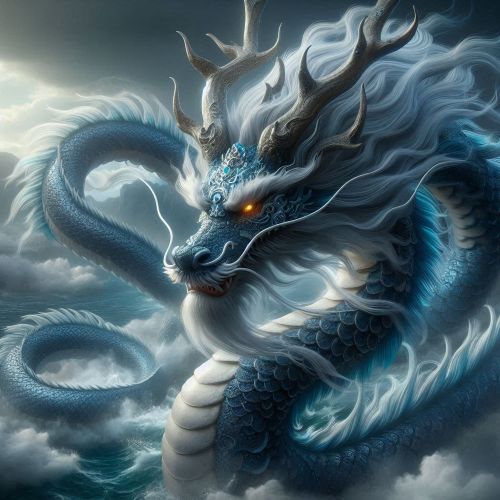Sanzuwu : The Solar Crow of the Three Realms
Listen
At a glance
| Description | |
|---|---|
| Origin | Chinese Mythology |
| Classification | Animals |
| Family Members | Xihe (Mother) |
| Region | China |
| Associated With | Sun |
Sanzuwu
Introduction
Among the luminous myths of East Asia, few shine as brightly as that of the Sanzuwu, the mysterious three-legged crow that soars across the sun. Known in Chinese mythology as the bird of the sun, Sanzuwu embodies light, transformation, and divine power. Its name translates literally to “three-legged crow” (三足乌), but the creature’s symbolism reaches far beyond mere form.
Appearing in ancient Chinese cosmology, Sanzuwu represents the solar essence — the fiery spirit that sustains life. Each of its three legs symbolizes one of the cosmic realms: Heaven, Earth, and Humanity. This triadic form connects it to Taoist balance and celestial order, where all things exist in dynamic harmony.
As a mythic symbol, Sanzuwu is both feared and revered: the eye of the sun, the messenger of gods, and the eternal reminder of light’s endurance over darkness.
Physical Traits
The Sanzuwu is depicted as a black crow with three strong legs, radiant feathers, and eyes that blaze like molten gold. The bird’s dark color contrasts its solar association — a deliberate paradox found throughout Chinese art and literature. The black plumage symbolizes the mysterious yin energy of the cosmos, while its fiery nature represents the yang — thus uniting opposites into one harmonious being.
Legends describe Sanzuwu as large enough to fill the solar disc, its wings stirring flames as it travels across the heavens. Ancient depictions in Chinese tomb murals and bronze artifacts from the Han dynasty show the bird perched within or beside the sun, symbolizing the movement of time and the daily rebirth of light.
Its three legs are central to its mythic identity. Each limb is said to correspond to morning, noon, and evening — or alternatively, Heaven, Earth, and Man — reinforcing its cosmic balance. In many retellings, the crow’s cry heralds sunrise, awakening the world to a new day.
Family
Sanzuwu belongs to a broader family of solar birds found throughout East Asian mythologies. In Japan, the Yatagarasu, another three-legged crow, serves as a divine guide from heaven; in Korean tradition, the Samjok-o symbolizes power and authority. These beings likely share a common origin in ancient shamanic beliefs that saw the sun as a living, winged spirit.
In Chinese lore, Sanzuwu is often linked with Xihe, the solar goddess and mother of the ten suns. According to myth, she bore ten radiant children, each represented as a three-legged crow. They took turns riding across the sky to light the world — until one day, all ten rose at once, scorching the earth. To restore balance, the archer Hou Yi shot down nine of them, leaving only one sun to illuminate the heavens. The surviving Sanzuwu thus became the eternal keeper of the sky’s flame.
Other Names
While “Sanzuwu” is the most common Chinese name, the bird is also known as Yangwu (阳乌), meaning “solar crow.” In some Taoist texts, it is called the Golden Crow (Jinwu, 金乌), representing the sun’s fiery chariot. The Japanese counterpart, Yatagarasu, literally means “eight-span crow,” symbolizing divine guidance, while the Korean Samjok-o means “three-legged crow” and is associated with royal power and the sun’s vitality.
In each culture, the bird’s core meaning remains consistent: it is the living embodiment of the sun’s strength and the bridge between divine will and mortal life.
Powers and Abilities
The Sanzuwu’s powers flow from its role as the solar avatar. It commands the energy of light and fire, ensuring the balance between life-giving warmth and destructive flame. In some interpretations, it carries messages between the celestial court and the earthly world, serving as a divine messenger much like Hermes or Garuda.
Its ability to traverse the heavens represents transcendence — the capacity to move freely between realms. Ancient Taoist scholars associated the Sanzuwu with immortality and enlightenment, seeing it as a guide for those seeking spiritual illumination.
Legends tell that when Sanzuwu spreads its wings, darkness recedes; when it cries, storms obey. Yet, like all forces of nature, it must remain in harmony — for excess light, as shown in the myth of the ten suns, brings chaos. The crow thus teaches restraint, reminding humanity that power must always serve balance.
Modern Day Influence
Sanzuwu’s image endures across Asia as a cultural and artistic motif. In China, it appears in paintings, sculptures, and temple carvings as a symbol of vitality, renewal, and royal legitimacy. In Korea, the Samjok-o is featured on ancient Goguryeo murals and modern national symbolism, while Japan’s Yatagarasu adorns Shinto shrines and the emblem of the Japan Football Association — a sign of divine guidance and teamwork.
In modern Chinese popular culture, Sanzuwu often appears in fantasy literature, anime, and games as a symbol of solar power or transformation. It represents the fiery spirit of perseverance — the idea that illumination follows even the longest night. In Feng Shui and spiritual practice, depictions of the three-legged crow are believed to attract energy, courage, and clarity to homes and workplaces.
For many spiritual seekers, Sanzuwu remains a potent archetype: a being that embodies the balance of light and mystery, reminding us that true enlightenment is not found in the absence of darkness but in its harmony.
As mythology adapts to modern consciousness, Sanzuwu continues to rise each morning — not only in the sky but in the human imagination — as a timeless emblem of purpose, guidance, and the eternal rhythm of rebirth.
Related Images
Source
Birrell, A. (1993). Chinese Mythology: An Introduction. Johns Hopkins University Press.
Yang, L., & An, D. (2005). Handbook of Chinese Mythology. Oxford University Press.
Strassberg, R. (2002). A Chinese Bestiary: Strange Creatures from the Guideways Through Mountains and Seas. University of California Press.
Wikipedia contributors. (n.d.). Three-legged crow. In Wikipedia, The Free Encyclopedia. https://en.wikipedia.org/wiki/Three-legged_crow
ChinaHighlights. (2022). Sanzuwu – The Three-Legged Crow in Chinese Mythology. https://www.chinahighlights.com/travelguide/culture/sanzuwu.htm
WorldHistory.org. (2023). Sanzuwu: The Three-Legged Sun Crow. https://www.worldhistory.org/Sanzuwu/
AncientOrigins. (2021). The Three-Legged Crow: Solar Symbol of East Asia. https://www.ancient-origins.net/myths-legends-asia/three-legged-crow-0016190
Encyclopedia of China. (2015). Sanzuwu (Three-Legged Crow). China Academic Press.
Frequently Asked Questions
What does the 3 legged crow symbolise?
The Sanzuwu in Chinese mythology is associated with the Sun and the might archer Hou Yi. The 3 legged crow in other mythologies have other meanings.
What bird is the Sanzuwu?
The sanzuwu is a raven or a crow according to researchers and it has a bad reputation as a harbringer for misfortune.
Who shot down the other Sanzuwus?
Folklore states that 9 sanzuwus were shot down by the famed archer Hou Yi when they started burning the earth by flying too close to it.
What are the other names of the Sanzuwu?
The Sanzuwu is also known as the Jinwu or Yangwu


